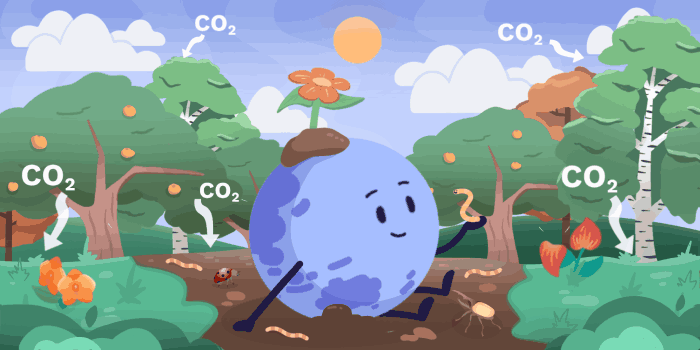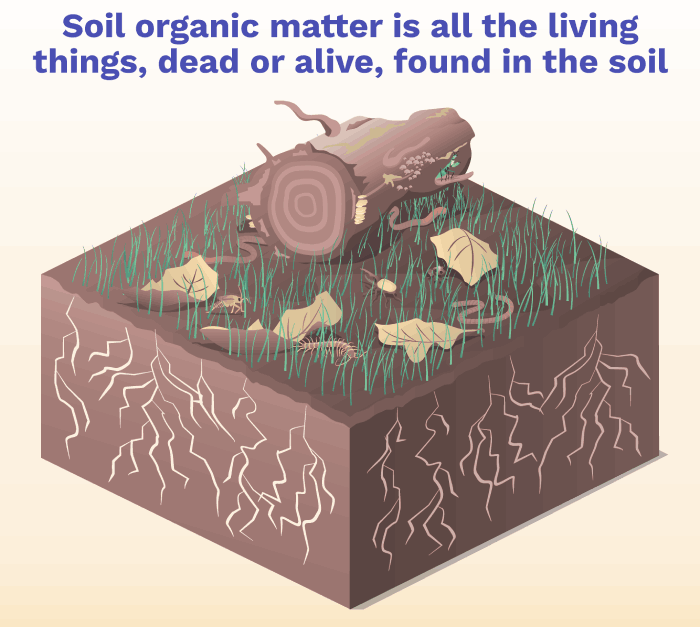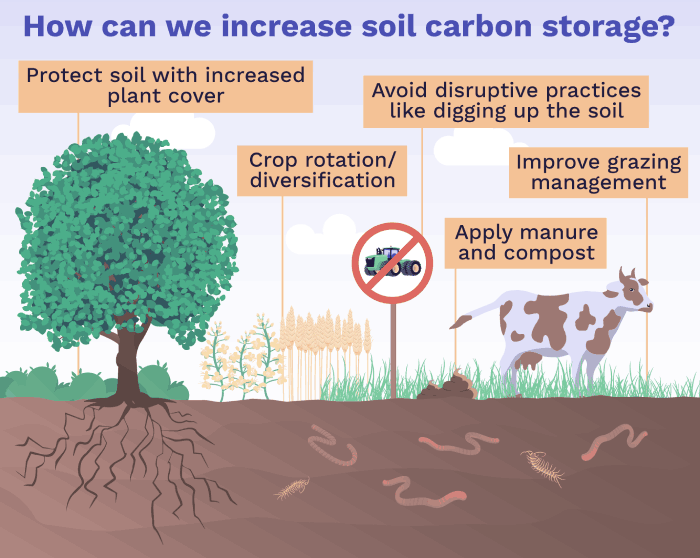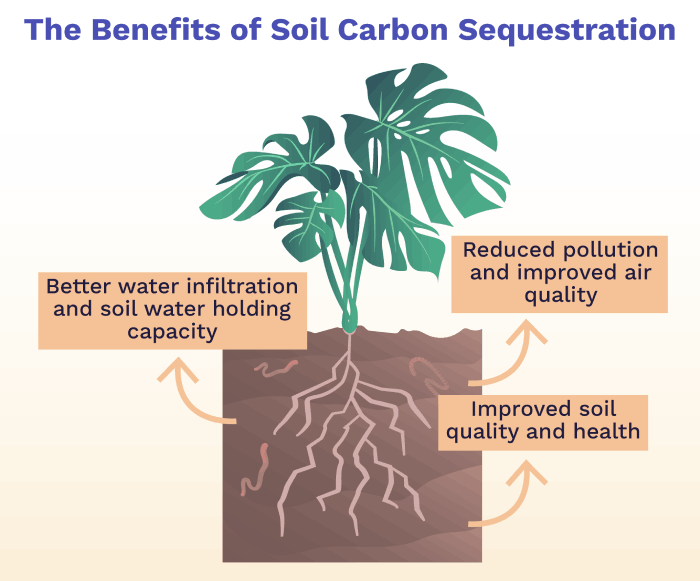Soil Carbon Sequestration: Do the Answers Lie Beneath the Earth?
6 minute read
Updated on: 28 Jul 2021

The top 1 metre of soil globally contains the equivalent of about 2,500 GtCO₂.
However, soils around the world are eroding over 10-40 times faster than they are being formed ! Agriculture is a key driver of this loss, largely due to unsustainable soil management practices that disturb soil structure
(for more information, check out our Food and Farming course). This erosion both puts our food supply at risk and releases large amounts of carbon from the soil into the atmosphere
.
But what if we could use agriculture to reverse this process instead of making it worse? What if we could capture CO₂ from the atmosphere and store it in soil ?
How does storing CO₂ in soil work?
Soil organic matter includes everything that comes from a living organism, whether or not it is still alive . Animals, leaves, roots, and other bits of plants in various stages of rotting all make up soil organic matter
.

Soil Organic Matter
Healthy soils are able to store more carbon dioxide ; therefore, restoring and protecting them will be really important for both producing enough food and helping to stop climate change
.
For the most part, methods of farming that increase soil organic matter also increase the amount of food that can be grown.
These methods include:
- Growing different crops over time
- Planting things called ‘cover crops’ to protect the soil below
- Limiting disruption to the soil through practices such as tilling
- Improving the way animals are allowed to graze
- Adding manure and compost
For more detail on these, check out our Food and Farming course !

Sustainable land management
How can we increase soil carbon storage?
Unlike tree planting, we don’t need extra land to store CO₂ in soil . Moreover, we can start straight away; the methods needed are generally well known by farmers and land managers
. And yet, many farmers are not using them…
Farmers often don’t want to change the way they work and it can take several years before these new methods start saving, rather than costing, the farmers money
. Added to this, some farmers don’t know which methods will be most effective for their specific soils
. Therefore, education, money, and encouragement from governments will be needed for these strategies to become more widespread
.
Another challenge is that storing CO₂ in soil is reversible; the carbon dioxide can be put back into the atmosphere if land management changes . Therefore, sustainable land management needs to continue even after the soils can’t take in any more CO₂
.
Environmental impacts of storing carbon in soil
Soil carbon sequestration can have a number of environmental benefits :

Advantages of soil carbon sequestration
However, the way in which soil carbon sequestration is encouraged is also important. For example, putting lots of manure on soils can add more nutrients, but it also releases a strong greenhouse gas .
Nitrous oxide is naturally released by microbes in the soil, but more is produced when manure or fertilisers are added to the surface .
How much will it cost?
Soil carbon sequestration is quite cheap or even free compared to other carbon removal methods, at US$0-100 per tonne of CO₂ .
In fact, about 20% of the potential carbon removal actually saves money, meaning it is possible to make between US$0 - $45 per tonne of CO₂eq . This is because the increased crop yields more than pay for the cost of the management methods
. However, it often requires an initial investment in the short term before these benefits are seen.
How much CO₂ can be removed by soil?
2-5 GtCO₂/year is a substantial amount (for comparison, remember tree-planting could remove 0.5–7 GtCO₂ per year by 2050 . But we also need to consider how long the soil will absorb carbon for: just like forests, soils can become saturated with carbon, meaning that they won’t absorb any more
. This occurs after 10-100 years depending on the type of soil, which management methods are used, and the climate (it is slower in colder places)
.
Conclusions
Soil carbon sequestration can bring many benefits to farmers and society, as well as helping to cool our planet by storing CO₂ . However, we need governments to support farmers so they can afford to start using these methods.
There is also another way to store carbon in soils: adding something called biochar . This could store even more carbon dioxide, and we’ll have a look at it in the next chapter…